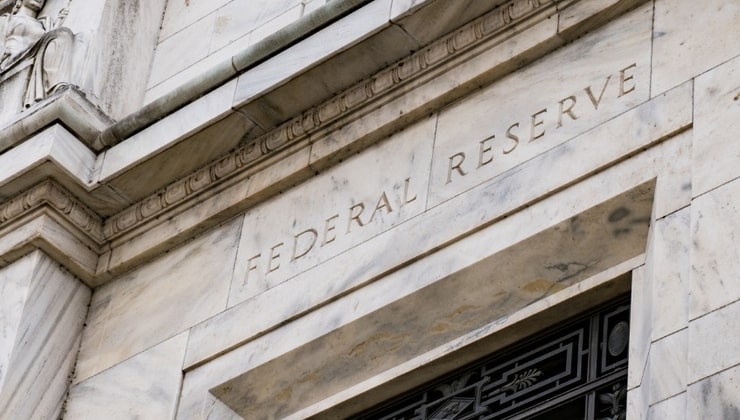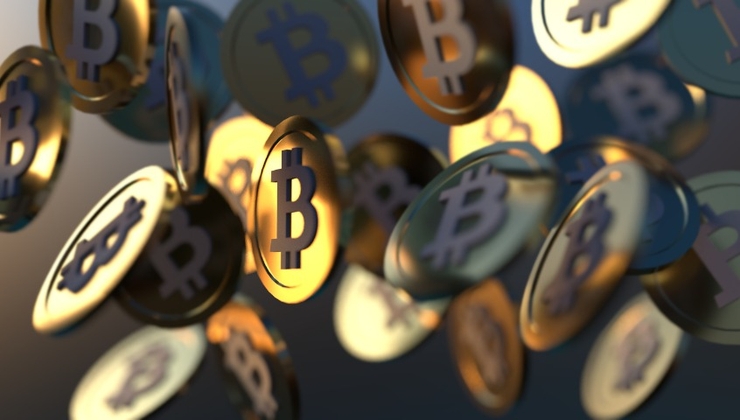- English
- عربي
Dollar Index (DXY):
The dollar had been strengthening in the run up to the coveted Fed meeting. However, once the meeting and press conference was said and done the dollar actually sold off, which has left market participants perplexed. The meeting certainly can’t be described as dovish as we saw 3 hikes priced for 2022 from the dots. The reasons for the softness in the dollar vary from policy error fears (economy can’t handle hiking cycle leading to a reversal in hikes), real yields falling lower down to aggressive rhetoric on inflation, position liquidations, risk-on from equity rally, buy the rumour sell the fact. As one can see there are a myriad of reasons one could pick.
So what were major changes which came out of the meeting 1) Pace of tapering doubled to $30bn/month (expected), meaning an end date of mid-March 2) 3 hikes signalled by the median dot plot (unexpected hawkish surprise) for 2022 3) Removal of the word transitory from the policy statement (mostly expected) 4) 2024 dot breaching the 2% level (not a major shock) 5) Chatter about balance sheet runoff i.e. QT (surprise). During the presser we received some further interesting commentary. With regards to sequencing, Powell had this to say – there had been no decision on the timing gap between tapering and a rate hike, but he doesn’t foresee a long delay between the taper and rate hike. This has now made the March meeting “live” with almost an 80% chance of a hike priced by the market for May, with June a lock. Core PCE inflation forecasts showed 2.7% in 2022 (vs prev. 2.3%), 2.3% in 2023, and 2.1% in 2024. Year-end 2022 unemployment is also expected to fall towards 3.5% vs 3.8% previously. Powell stated he doesn’t expect rates to be lifted until full employment has been achieved, however, he caveated this with “balancing of our goals means we could possibly raise interest rates before full employment is met due to high inflation.” He also acknowledged the more persistent nature of the supply chain bottlenecks and that price increases were broad.
For me, the most interesting and potentially most bullish dollar factor over the medium-term is the divergence between what the market expects the 2024 dot out to the terminal rate to be and what the Fed envisions. There is roughly a gap of about 100bps. Essentially, the market is saying Fed hikes will fizzle out around 150bps as the economy can’t absorb further hikes. This to me creates the opportunity for a hawkish repricing and the money market curve to steepen providing a tailwind for the dollar.

(Source: TradingView - Past performance is not indicative of future performance.)
DXY has dropped below its upper trend line and is now hovering just above the round number of 96 and the 21-day EMA. The RSI has dropped below the 55 support level. On a further slide in price I'd look towards 95.5 support. On the upside, the bulls should look out for 96.5 and just shy of previous highs around 97.
EURUSD:
The ECB stuck to their dovish script and didn’t cause any sea sickness for traders unlike another central bank I’ll get onto below. So what were the major outcomes 1) Inflation forecasts received a punchy upgrade for next year to 3.2% and then decline to 1.8% in both 2023 and 2024 (below 2% target) 2) PEPP will as expected be terminated in March 2022, but can be started up again if conditions deem it necessary. 2) Reinvestments for PEPP was extended to the end of 2024. 3) APP purchases over 2022 will run at a clip of €40bn/month for Q2, €30bn/month for Q3 then declining to €20bn/month. Then, this pace will be kept in place for as long as necessary i.e. an open-ended termination date.
In terms of rate lift off the GC stated that it expects net purchases to end shortly before it starts raising rates. I see it happening at the very earliest in H2 2023. This makes the market’s 15bps year end next year aggressive. Lagarde continued to emphasize that a rate rise in 2022 was very unlikely on the basis of their forward guidance as well as the lack of second round effects and wage pressures which would keep inflation elevated. The hawks in the committee had their claws out post the meeting with disagreements on the inflation outlook (upside risks), extending PEPP reinvestments to 2024 and leaving the APP termination date open-ended.

(Source: TradingView - Past performance is not indicative of future performance.)
Interestingly, on a dovish meeting the euro has broken to the topside of the mini flat sided descending triangle pattern and is right on its 21-day EMA. The RSI is close to the 52 resistance area. Targets wise, the candle high of the pattern around 1.138 would be a good initial area. On the downside, look towards the pattern support at 1.124.
GBPUSD:
Another utterly shambolic BoE meeting. Jonathan Ferro (Bloomberg Anchor) aptly tweeted that Mark Carney is looking like marriage material in comparison to Governor Bailey at the moment. In November, the rhetoric was leading the market to expect a hike and then they didn’t hike. Leading up to this meeting, inflation hawk Saunders, cautioned with uncertainty from omicron necessitating a wait and see approach before hiking as well as Broadbent speaking about the lag from monetary policy. So what did the BoE decide to do? Hike for the first time since 1997 at Christmas with an 8-1 vote in favour (what does that mean for February’s meeting). 2Y Gilt yields spiked and so did Cable on the shock move by the BoE. Another unnecessary spike in volatility caused by the Old Lady of Threadneedle Street.
They really are becoming completely unreadable at the moment and damaging their credibility. The 5 handle on CPI earlier this week must have really spooked some on the MPC. On the topic of inflation, policy makers stated that more modest tightening was likely to be needed to temper inflation as they believe the peak is going to be around 6% in April 2022. Labour data out on Monday also indicated that the employment sector remains healthy without the support of the furlough scheme and the BoE actually stated themselves they thought it was tight. On the topic of uncertainty created by omicron, clearly they’re looking through the short term hit and believe it won’t alter the medium-term picture. They alluded to this rationale with their statement of “evidence since march 2020 shows that consecutive waves of covid have had a lower impact on GDP.”
What does this mean for February’s meeting? OIS pricing is indicating a 60% chance of a hike in February. It really does depend on the hit from omicron - does the labour market remain strong? However, omicron may exacerbate inflationary pressures, which now clearly is front of mind for the BoE. Markets foresee about 100bps of hikes throughout 2022, which opens the door to medium-term weakness for Sterling on a dovish repricing. Inflation is still being driven narrowly by energy and goods, wage growth and second round effects are not problematic currently. Additionally, once a rate of 0.5% is hit reinvestment of maturing gilts will come to a halt which will do some of the tightening for the BoE, hence allowing for a shallower rate hiking cycle.
On the domestic political front, the Conservatives got smashed by the Liberal Democrats in a seat they’ve held since 1832. Quite clearly this was to send a message loud and clear that voters are fed up with Boris Johnson’s antics. Another strike and he’s out? On Brexit, there have been reports that the UK have softened their view on ECJ jurisdiction, but David Frost the UK’s lead negotiator still seems to have an issue with it. Negotiations set to continue into next year.

(Source: TradingView - Past performance is not indicative of future performance.)
Cable had a good run on the shock hike. It's found resistance now at the 1.336 level and is hovering around its 21-day EMA. The RSI has run out of steam and looks to be rolling over a touch. Bit of divergence as price made a lower high and the RSI made a higher high. Usually quite bearish. Targets on the upside are the resistance line at 1.336 and on the downside look towards 1.325.
Related articles
Ready to trade?
It's quick and easy to get started. Apply in minutes with our simple application process.
The material provided here has not been prepared in accordance with legal requirements designed to promote the independence of investment research and as such is considered to be a marketing communication. Whilst it is not subject to any prohibition on dealing ahead of the dissemination of investment research we will not seek to take any advantage before providing it to our clients.
Pepperstone doesn’t represent that the material provided here is accurate, current or complete, and therefore shouldn’t be relied upon as such. The information, whether from a third party or not, isn’t to be considered as a recommendation; or an offer to buy or sell; or the solicitation of an offer to buy or sell any security, financial product or instrument; or to participate in any particular trading strategy. It does not take into account readers’ financial situation or investment objectives. We advise any readers of this content to seek their own advice. Without the approval of Pepperstone, reproduction or redistribution of this information isn’t permitted.
.jpg)


